179. REAR WINDOW, 1954
- Jay Jacobson
- Aug 12
- 19 min read
Looking out your window was never so tantalizingly dangerous

Prepare to be glued to your seat for 111 minutes, for “Rear Window” will do just that. It’s an intimate, voyeuristic, psychological thriller packed with so much stylish suspense, humor, sex, and intrigue, you simply can’t look away. Nominated for four Oscars and directed by the Master of Suspense himself, Alfred Hitchcock, it’s been ranked among the greatest films of all time by both the American Film Institute (AFI) and the British Film Institute (BFI), and is regarded as one of Hitchcock’s best and most perfectly crafted movies. A longtime favorite, revisiting it reminded me exactly why — it’s a spellbinding thrill ride that never lets up.

Set in New York City during a sweltering heatwave, “Rear Window” centers around magazine photojournalist “L.B. Jefferies” (“Jeff”), who’s confined to his Greenwich Village apartment with a broken leg in a cast — the result of an on the job accident. His apartment overlooks a courtyard surrounded by wall-to-wall apartments, and thanks to the oppressive heat, just about everyone has their windows open. With one more week before his cast comes off, “Jeff” complains to his editor over the phone that he’s bored to death from “six weeks sitting in a two room apartment with nothing to do but look out the window at the neighbors”.

“Jeff” gets daily visits from “Stella”, an insurance company nurse who makes his bed, takes his temperature, cooks his meals, massages him, has a wry sense of humor, and a knack for sensing trouble. As such, she tells him: “I can smell trouble right here in this apartment. First you smash your leg, then you get to looking out the window, see things you shouldn’t see — trouble”.

“Stella” also urges “Jeff” to marry his girlfriend, “Lisa Fremont”, a glamorous fashionista and socialite who loves him deeply and wants to marry him. Afraid of being tied down, “Jeff” insists “Lisa's” too perfect and too refined to share the adventurous life of a photojournalist. He refuses to stay put in New York, and won’t let her follow him on the road. But “Lisa” loves him too much to give up.

Photojournalism is a voyeuristic profession, so perhaps by nature, “Jeff” has taken to watching his neighbors through his windows. They include a flirtatious ballerina he calls “Miss Torso”, a frustrated songwriter, newlyweds, an arguing married couple, a childless couple with a dog, and a woman desperate for love who he nicknames “Miss Lonelyhearts”.

But as he keeps peering out his window, things take a morbid turn. As he explains to “Lisa”: “I’ve seen bickering and family quarrels and mysterious trips at night, and knives and saws and ropes...”, and he begins to think there’s been a gruesome murder in one of the apartments. So he calls NYPD detective “Tom Doyle” (his former war buddy) for help. But “Tom” is skeptical due to lack of evidence, so with the help of “Lisa”, “Stella”, a pair of binoculars, and a telephoto lens, “Jeff” tries to figure out if and how a murder was carried out. That's the basic setup for “Rear Window”.

This film is so compellingly fun it can be taken as sheer entertainment — and justly so. But a look under the surface (as “Jeff” does with his neighbors), will find a richly complex film that works on multiple levels and ruminates on many themes. Several of them, such as mistrust, alienation, isolation, and kindness (or lack of), were surely influenced by the zeitgeist at the time, with McCarthyism still raging (the film was made just before its fall — see my post on “High Noon” for an explanation of McCarthyism).

The most obvious theme in “Rear Window” is voyeurism, and the film slyly implicates us alongside “Jeff” as voyeurs. Like him, we become absorbed in spying on his neighbors, eager to see what they’ll do next while they remain unaware they’re being watched. It can be uncomfortable for all of us at times, prompting “Jeff” to ask “Lisa”: “I wonder if it's ethical to watch a man with binoculars and a long-focus lens? Do you suppose it's ethical even if you prove he didn't commit a crime?”. Part of him and us know it’s wrong, but we can’t look away.

Another interesting aspect of the film is its handling of gender roles. “Jeff” is the weak and defenseless one, while “Lisa” is independent and strong, and along with “Stella”, a take-charge, working woman who knows what she wants and isn’t afraid to go after it. An interesting switch on the societal stereotypes of the time of men expected to be the independent authority figures and main breadwinners, and women subordinate homemakers, wives, and mothers.

At the heart of the film sits the theme of love and marriage and “Jeff’s” struggle about marrying “Lisa” (it’s no coincidence a wedding ring plays a key role in the movie). Each of the neighbors he watches represent a different aspect of relationships (being alone, married, flirting, arguing, sex) and “Jeff” watches them grapple with these issues instead of doing so himself. As “Stella” astutely points out, “We’re becoming a race of Peeping Toms. What people ought to do is get outside their own home and look in for a change”.

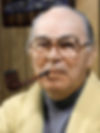
This film was based on a Cornell Woolrich 1942 short story, “It Had to Be Murder”, acquired by theater director Joshua Logan and producer Leland Hayward in 1952. But as they were about to work on it, Logan’s agent sold it to another of his clients — Alfred Hitchcock. Liking the mix of comedy and suspense that writer John Michael Hayes infused in his radio dramas, Hitchcock hired him to turn Woolrich’s story into a screenplay, which he did, with Hitchcock’s help (Hitchcock always had a hand in the screenplays for his films without taking credit). “Rear Window's” phenomenal screenplay earned Hayes a Best Screenplay Academy Award nomination and turned him into an A-list screenwriter. In his forty plus year career, he wrote over two dozen screenplays, including Hitchcock’s next three films ("To Catch a Thief", "The Trouble with Harry", "The Man Who Knew Too Much”), and non-Hitchcock films like "Separate Tables", "The Children's Hour”, "Nevada Smith”, and "Peyton Place” (which earned him a second Oscar nomination). He was married once, to a high-fashion model who served partly as inspiration for the character of “Lisa” in “Rear Window” (“Lisa” was not in the original short story). John Michael Hayes died in 2008 at the age of 89.

Alfred Hitchcock had a mind for making movies like no one else. A true cinematic genius. He worked all his films out in his mind so thoroughly during the screenwriting process (including camera angles, exact edits, costume and set colors, moods, etc.), that actual filming bored him because the film had already been made in his head. His films were so precisely planned and shot, that when the footage reached the editors, they had only one way to edit it — the way Hitchcock originally intended.

Like all great artists, Hitchcock loved a challenge, and “Rear Window” is a shining example. In it, he set himself the task of telling a story through the point of view of an immobile protagonist confined to a single room, shooting almost every shot within the walls of his apartment, all while keeping the audience fully engrossed. He more than succeeded, for “Rear Window” is hypnotic from start to finish.

Much of Hitchcock’s strength lies in his uncanny ability to tell stories visually — a skill shaped by his early work in silent films, the influence on him of Russian montage (see my post on “Battleship Potemkin”), and most importantly, his time in Germany studying the Expressionist movement and director F.W. Murnau. These experiences, combined with his remarkable instincts, gave Hitchcock an unsurpassed gift at using visuals to drive narrative and evoke emotion.

Take the opening of “Rear Window” as an example. The credits appear superimposed on “Jeff’s” closed window shades, which slowly rise as the credits appear, gradually revealing the world just beyond his apartment (birds flying, cars passing, people going about their lives), much of it barely visible. Yet the way Hitchcock shoots these glimpses immediately piques our curiosity about life outside “Jeff’s” apartment, turning us into voyeurs before we’ve even meet a single character.

After the credits, Hitchcock delivers a spectacular shot as the camera looks down to follow a cat entering the courtyard, then pans up to survey the surrounding apartment windows and balconies before turning to go inside “Jeff’s” apartment for a tight close-up of sweat dripping down his forehead. In a single shot, Hitchcock visually establishes the layout of the courtyard and apartments in connection to “Jeff’s” apartment, while making it clear that “Jeff” will be the story’s central focus.

But Hitchcock doesn’t stop there. After a quick shot of a thermometer reading 94°F and a glimpse of a man shaving in his apartment, the camera pans across several neighbors’ windows (this time letting us see them) before returning to “Jeff’s” apartment for a medium shot of his leg in a cast inscribed with “Here lie the broken bones of L.B. Jeffries". The camera pulls back to reveal he’s in a wheelchair, then pans around his apartment, showing a broken camera, news photos of disasters on the wall, photography equipment, and a framed negative of a glamorous woman — the same image seen on a stack of magazines nearby. In a single fluid shot, Hitchcock reveals the protagonist’s name, his injury, his condition, and his adventurous profession. It’s both clever and entertaining — a masterclass in visual storytelling.

The film’s also a tour de force in Hitchcock’s definitive talent to employ subjective filmmaking (putting an audience in the shoes of a character — in this case, “Jeff”). As he explained to Donald Spoto in the book “The Art of Alfred Hitchcock”: “‘Rear Window’ was, structurally satisfactory because it is the epitome of the subjective treatment. A man looks, he sees, he reacts. Thus you construct a mental process. ‘Rear Window’ is entirely a mental process, done by use of the visual”.

Hitchcock’s skillful juxtaposition of shots creates meaning, sparks laughter, draws us in, earns our sympathy, and keeps us on edge. Take a simple shot of a man leaving his apartment at night with a suitcase. On its own, it carries little weight. But placed after a shot of “Jeff” watching with concern, it suddenly feels charged with suspicion, making us wonder where the man is going and what’s in the suitcase. Hitchcock’s genius lay in building emotion this way, which is why “Rear Window” remains such riveting, pitch-perfect cinema. It’s also a masterclass in editing and subjective storytelling.

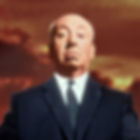
Hitchcock’s direction in “Rear Window” is flawless in every respect: from the evocative framing of his shots (characters glimpsed through windows with deliberate blind spots); his precise use of close-ups; his masterful use of light (the eerie glow of a cigarette in the dark or the safety suggested by Jeff retreating into shadows); to his striking use of sound (the shallowness of distant party music or the terror of approaching footsteps). "Rear Window" earned him his fourth of five Best Director Oscar nominations, was one of his biggest box-office hits, and remains both one of his most popular films and one of his greatest artistic achievements. Be sure to read more about the peerless Alfred Hitchcock in my previous posts on “Notorious”, “Strangers on a Train”, “Rebecca”, “The Birds”, “North by Northwest”, “Vertigo”, and “Psycho”. Just click on the film titles to open them.

To maintain complete control over every aspect of the film, Hitchcock shot “Rear Window” entirely on a single, massive indoor set. This set took months to plan and build, filling an entire soundstage. “Jeff’s” second-story apartment was constructed on the soundstage floor, while the courtyard was excavated and built below. According to the book "Hitchcock at Work”, the set was 38 feet wide, 185 feet long, 40 feet high, and included 31 apartments — twelve of which were completely furnished.

The apartments opposite “Jeff’s” were 70 feet away, and since the entire film was shot from his point of view, Hitchcock directed the action from “Jeff’s” apartment. He used a shortwave radio to instruct the actors playing the neighbors (who wore headsets) during filming.

The film’s cinematographer Robert Burks came up with using a telephoto lens on a crane to capture details through neighbor’s windows from “Jeff’s” point-of-view, and also devised a system to somewhat streamline the immense lighting (duplicating sunlight, moonlight, lighting "Jeff's" apartment, the lamps and lights inside all other apartments, and the courtyard), creating general presets for different times of day and night and a large console from which to control individual apartments. Burks’ gorgeous work earned him a Best Cinematography Oscar nomination. You can read more about Robert Burks in my post on “Strangers on a Train”. Be sure to check it out.

Photos were taken of an actual Greenwich Village courtyard to help with set design and lighting, and ambient sounds were also recorded, which Hitchcock gave to the sound team at Paramount to help with sound design. To maintain "Jeff's" point of view, sounds from the neighbors on the set were recorded from Jeff's apartment. The fantastic use of sound earned Loren L. Ryder a Best Sound Recording Oscar nomination. This film is a technical coup, which one would never think about while watching it.

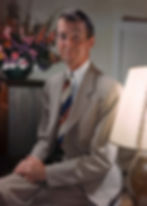
James Stewart stars as wheelchair-bound photojournalist “L.B. ‘Jeff’ Jefferies”, delivering a spectacular performance illuminating the full spectrum of human emotion — fear, boredom, joy, vulnerability, curiosity, frustration, terror, and longing. Notice how effortlessly he juggles talking to his editor on the phone while intently observing his neighbors, seamlessly conveying a range of subtle emotions in both his dialogue and reactions. And his lifelike interactions with “Stella” and sizzling chemistry with “Lisa” further deepen his character. “Jeff” isn’t perfect. He can be dismissive of “Stella" and occasionally mean to “Lisa”, but Stewart’s warm honesty keeps him endlessly likable. Renowned for his natural believability, Stewart makes us feel, care, and accept every moment in “Rear Window” as utterly real. He’s the heart and soul of the film and his truthfulness is key as to why the film works so well and remains so timeless.

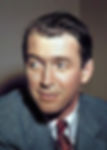
Casting was one of Hitchcock’s great strengths, and he knew from the start he wanted Stewart to play “Jeff”. Stewart previously starred in Hitchcock’s 1949 film “Rope”, famously shot to look like one continuous take. The shoot required meticulous camera placement and moving sets, and Stewart found the shoot challenging, telling Hitchcock, as quoted in Michael Munn’s book “Jimmy Stewart”, “The only thing that’s getting rehearsed around here is the camera”. ”Rope” received mixed reviews and lukewarm box-office returns, so Stewart was initially hesitant to work again with Hitchcock on “Rear Window". But he soon came around, and the two even formed a production company, Patron Inc., to produce the film. Though already a major star, "Rear Window" gave Stewart’s career a significant boost, and in 1955, he became Hollywood’s #1 box-office star and remained in the Top Ten for the rest of the decade.


Stewart collaborated with Hitchcock twice more, starring in “The Man Who Knew Too Much” and “Vertigo”. Along with directors Frank Capra and Anthony Mann, Stewart’s work with Hitchcock helped reshape his screen image with a new depth to his persona. Not only a major movie star, but one of the truly great actors of cinema, Stewart was named the 3rd Greatest American Male Screen Legend by the American Film Institute. You can read more about the life and career of James Stewart in my posts on “The Philadelphia Story”, "It's a Wonderful Life”, "You Can't Take It with You”, “The Shop Around the Corner”, “Anatomy of a Murder”, “Vertigo”, and “Mr. Smith Goes to Washington".

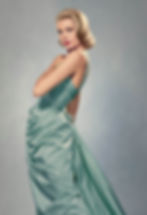
Another key reason “Rear Window” is a cinematic jewel is Grace Kelly’s portrayal of “Lisa Fremont”, a fashion buyer and former model who wants to marry “Jeff”. Few moments in movies are as iconic as “Lisa’s” entrance leaning in to kiss “Jeff”. Her radiant beauty and erotic intimacy set the screen ablaze. She's irresistible (even if “Jeff” can't see it). But “Lisa” is far more than just a beauty, for Kelly adds intelligence, determination, humor, courage, and strength below that regal exterior. Watch how she maintains poise while serving “Jeff” dinner despite his cutting remarks or when he tells her she’s not right for him after dinner. It's a balance of strength, confidence, and profound sensitivity all at once. I first saw “Rear Window” as a kid. It was my introduction to Grace Kelly and I instantly fell in love. She was the most beautiful, graceful, and elegant presence I’d ever seen onscreen. Millions felt the same, and “Rear Window” launched her into A-list stardom.

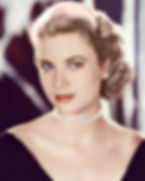
Born in Philadelphia to a wealthy, prominent family, Grace Kelly developed a passion for the dramatic arts, poetry, and literature thanks to her Pulitzer Prize-winning playwright uncle, George Kelly. Against her parents’ wishes, she moved to New York City after high school to pursue acting. She studied at the American Academy of Dramatic Arts and began modeling to earn money and gain independence. She acted in theater and made her Broadway debut in 1949’s “The Father” (earning a Theatre World Award), which led to her film debut in a minor role in 1951’s “Fourteen Hours”. She continued stage work (including one more Broadway appearance in 1952's “To Be Continued”), while building a steady TV career with over 40 appearances by 1952. She was next called to Hollywood for a supporting part in the classic 1952 Western “High Noon”, which put her on the map. Dissatisfied with her performance, she returned to New York for more acting classes. A screen test of hers caught the attention of director John Ford, who cast her opposite Clark Gable and Ava Gardner in 1953’s “Mogambo” (a remake of "Red Dust"), filmed on location in Africa. The prospect of working with Ford and Gable in Africa was enough for her to reluctantly sign a long-term contract with MGM. “Mogambo” was a success, earned her a Best Supporting Actress Oscar nomination, a Golden Globe win, and firmly established her as a star.

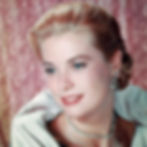
1954 marked a turning point for Kelly. Hitchcock had taken notice of her in “High Noon”, believing her combination of beauty and what he called a “mousy” performance fit his ideal of the cool blonde leading lady — a woman he could mold into an image of icy elegance with smoldering passion beneath the surface. After she completed “Mogambo”, Hitchcock met with her and cast her as the female lead in ”Dial M for Murder”. As Hitchcock explained in Robert Lacey’s book “Grace”: “An actress like her gives the director certain advantages. He can afford to be more colorful with a love scene when it is played by a lady than when it is played by a hussy. Using one actress, the scene can be vulgar. But if you put a lady in the same circumstances, she can be exciting and glamorous”. Hitchcock did exactly that, glamorizing Kelly with sumptuous costumes, star-making close-ups, and drawing out her sensuality. The film was a hit, and Kelly’s star continued to rise.

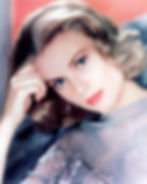
While filming “Dial M for Murder”, Hitchcock mentioned to Kelly that his next project would be “Rear Window” and that he wanted her for the female lead. She accepted, famously turning down a role opposite Marlon Brando in “On the Waterfront”. The role of “Lisa” was unlike anything Kelly had played, and to help her be more natural and less stiff, Hitchcock had Hayes spend a week with her before writing the script, shaping the role specifically to suit her personality (Hayes also tailored Stewart’s character for Stewart). The result transformed Kelly into the ultimate embodiment of Hitchcock’s cool, sophisticated, and smoldering blonde. Her star quality was electric, and she received widespread critical acclaim, making her a top-tier star. She appeared in three more films in 1954, including “The Country Girl”, a role she fought for, in which she shed her aristocratic glamour to play a frumpy, troubled wife. That performance won her a Best Actress Academy Award and a Golden Globe. That same year, she was also awarded the New York Film Critics Circle Award for “Dial M for Murder”, “Rear Window”, and “The Country Girl”.


Kelly’s final collaboration with Hitchcock was 1955's “To Catch a Thief” opposite Cary Grant, filmed partly on location in Monaco and the French Riviera. While attending the Cannes Film Festival that year, she met Prince Rainier III of Monaco, and the two fell in love. Back in Hollywood, Kelly made just two more films: “The Swan” (playing a princess); and “High Society” (a musical remake of “The Philadelphia Story”), before marrying Prince Rainier in 1956. At twenty-six, she left Hollywood and America to become Princess Grace of Monaco. Their engagement and wedding made headlines worldwide and brought Monaco unprecedented global attention. Though forced to retire from acting once married, along with her daily royal duties, Princess Grace remained devoted to the arts, became involved in philanthropic work, formed the Princess Grace Foundation, gave occasional poetry readings, established Monaco’s first theatre, and a professional ballet school. In a Hollywood career of only eleven films and roughly three years at the top, she became a legend who embodied her very name — Grace. Her impact was so great that AFI named her the 13th Greatest American Female Screen Legend of All-Time. You can read more about the life and career of Grace Kelly in my “High Noon” post.


“Rear Window” features outstanding performances across the board, particularly Thelma Ritter as “Stella”, “Jeff’s” no-nonsense nurse who never hesitates to speak her mind. She delivers much of the film’s humor, insights, and ethical questions — chastising "Jeff" for being a Peeping Tom in one breath, then quipping in the next that he must have a hormone deficiency because “Those bathing beauties you’ve been watching haven’t raised your temperature one degree in a month”. Ritter’s remarkable talent keeps “Stella" entirely believable, and her deadpan delivery, seen-it-all attitude, warm sarcasm, and sharp wit make her irresistibly endearing. A moment I love is when she casually eats toast next to “Jeff", peering out the window as they discuss the possible murder. It’s a perfect example of Ritter’s impeccable comedic timing. Anyone consistently reading this blog will know by now that Ritter is one of my favorite character actors, and when you watch “Rear Window”, you’ll understand why.

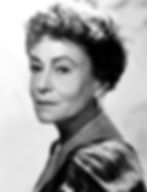
After working in theater, then taking a break from acting to raise a family, Thelma Ritter made her film debut while in her mid-40s in 1947’s “Miracle on 34th Street”. And so began a fruitful film career. Though often typecast as mothers, maids, nurses, and other working type women, Ritter’s engaging manner and faculty at making her characters come to life in both comedy and drama earned her six Academy Award nominations and made her stand out in practically every film in which she appeared — often stealing scenes from the stars she appeared alongside, such as Bette Davis, Marilyn Monroe, Clark Gable, Humphrey Bogart, Gene Tierney, and James Stewart. Her popularity and remarkable performances elevated audiences' perceptions of supporting actors, revealing the value and impact they bring to a film. She appeared in thirty one films and nearly a dozen TV shows, and you can read more about the life and career of Thelma Ritter in my posts on "All About Eve", "Pillow Talk", "The Misfits", and "Miracle on 34th Street”.

The last actor I’ll mention is Raymond Burr who plays “Lars Thorwald”, one of “Jeff’s” neighbors. I won’t say a lot about “Thorwald” except that Burr is perfect in the role — mysterious, scary, and even somewhat sympathetic. It's yet another portrait of a real person in “Rear Window”.

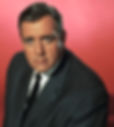
Canadian-born Raymond Burr moved to California at age six and began acting on radio and stage in his teens, eventually appearing on Broadway twice in the early 1940s. His film debut was in 1946’s “Without Reservations”, and with his imposing build, he became a frequent villain in film noir (in films like “Raw Deal”, “Pitfall”, “Sleep, My Love”, “His Kind of Woman”, and “Desperate”). His breakthrough came as the District Attorney in 1951’s “A Place in the Sun”, and over a dozen films later, “Rear Window” brought him even greater recognition. Working steadily in television since 1951, Burr’s star-making role arrived in 1957 with “Perry Mason”, which became one of TV’s longest-running and most popular legal dramas (nine seasons), earned Burr two Emmy Awards with three nominations, and made him a television icon. He followed it with another iconic series, “Ironside” (1967–1975), bringing him six more Emmy nominations. He continued acting in film and TV until his death, notably reviving “Perry Mason” in over two dozen TV movies and starring in the 1993 TV movie “The Return of Ironside”. In total, Burr appeared in more than 140 films and TV shows. His other films include “Godzilla, King of the Monsters!” (American re-edit), “The Blue Gardenia”, “Bride of the Gorilla”, “Airplane II: The Sequel”, and “The Adventures of Don Juan”. Though briefly married once, it was an open secret in Hollywood that Burr was gay. He shared a 35-year partnership with actor-turned-producer Robert Benevides. Together, they ran a wine vineyard, owned a private island in Fiji, and were avid orchid farmers. Raymond Burr died in 1993 at the age of 76.

Mention must be made of “Rear Window’s” legendary costume designer, Edith Head. She designed or oversaw costumes for more than 400 films, and as of this writing holds the record for the most Oscar nominations (35) and wins (8) of any woman in history. She also remains one of the few costume designers to become a household name. Of all the directors she worked with, Hitchcock was her favorite. She explained in “Filmmakers on Filmmaking, Volume Two”: “If you ask Hitchcock what he wants, he’ll say, ‘My dear Edith, just read the script.’ Hitch is the only person who writes a script in such detail you could make the clothes without discussion. I do sketches for him, though".


Head and Hitchcock collaborated on twelve films, and her designs often set fashion trends. Among their most iconic collaborations was “Rear Window”. For “Lisa”, a woman “who never wears the same dress twice", Head created costumes that evolve from soft, romantic silhouettes to more tailored, bold patterns as the character’s confidence and involvement grow, while always reflecting “Lisa’s” innate class and sophistication. Head even developed a custom color specifically for the film, Odinie Green, featured in the suit “Lisa” wears while she and Jeff discuss jewelry (Head later adapted this design for Tippi Hedren’s wardrobe in “The Birds”). Regarding Kelly, in the 1981 documentary “Edith Head”, Head said: “I was thinking the other day if I were a star, who I would like to be. And I think I’d rather be Grace Kelly than anybody else, because she typifies the elegance of certain people”. The legendary Head designed costumes for countless classics, many already on this blog, like “The Heiress”, “Double Indemnity”, “Hud”, “Roman Holiday”, “Sunset Boulevard”, "Sullivan’s Travels”, “The Birds”, “Vertigo”, “Butch Cassidy and the Sundance Kid”, “Hold Back the Dawn”, and “A Place in the Sun”. You can read more about Edith Head in my posts on some of those films, particularly the last.

Another familiar name to readers of this blog is Franz Waxman, who composed the score for "Rear Window”. While much of the film’s music stems organically from its fictional world (such as popular songs playing on the radio), Waxman provided the jazzy themes for the opening and closing credits, as well as the original song “Lisa”, which the songwriter character is heard composing throughout the film. This marked Waxman’s fourth and final collaboration with Hitchcock (following his scores for “Rebecca”, “Suspicion”, and “The Paradine Case”). Read more about Franz Waxman in my post on "Sunset Boulevard".

Don’t forget to watch for Hitchcock himself, who makes a quick cameo appearance in “Rear Window”. I’ll point it out in the TO READ AFTER VIEWING SECTION for after you watch the film.

This week’s pick is pure cinematic pleasure — suspense, passion, humor, and masterful filmmaking all wrapped into one unforgettable experience. Enjoy a movie I’ve loved for decades. Enjoy “Rear Window”!
This blog is a (currently triweekly) series exploring classic films from the silent era through the 1970s. Each post recommends a film to watch, aiming to entertain, inform, and deepen your appreciation of cinema — its stars, directors, writers, the studio system, and more. Be sure to visit the HOME page to learn more, subscribe for email updates, and check out THE MOVIES page for a full list of films. Please comment, share with others, and subscribe so you never miss a post. Thanks for reading!
YOU CAN STREAM OR BUY THE FILM ON AMAZON
OTHER PLACES YOU CAN BUY THE FILM:
As an Amazon Associate I earn from qualifying purchases, and any and all money will go towards the fees for this blog. Thanks!!
TO READ AFTER VIEWING (contains spoilers):

In case you missed Hitchcock’s cameo, he appears about 26 minutes into the film, winding a clock in the apartment with the songwriter.




